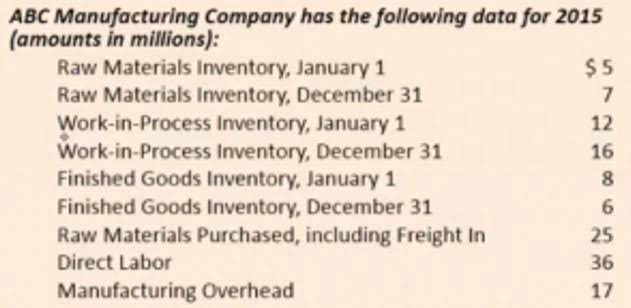
Examples of long-run incremental costs include energy and oil price increases, rent increases, expansion costs, and maintenance expenses. Because the sunk costs are present regardless of any opportunity or related decision, they are not included in incremental analysis. It can be of interest to determine the incremental change in cost in a number of situations. For example, the incremental cost of an employee’s termination includes https://www.bookstime.com/ the cost of additional benefits given to the person as a result of the termination, such as the cost of career counseling. Or, the incremental cost of shutting down a production line includes the costs to lay off employees, sell unnecessary equipment, and convert the facility to some other use. As a third example, the sale of a subsidiary includes the legal costs of the sale.
What is an Incremental Cost?
All fixed costs, such as rent, are omitted from incremental cost analysis because they do not change and are generally not specifically attributable to any one business segment. It’s calculated by analyzing the additional expenses incurred based on the addition of the unit. Incremental costs may be classified as relevant costs in managerial accounting.
Understanding Incremental Costs
Incremental costs help to determine the profit maximization point for a company or when marginal costs equal marginal revenues. If a business is earning more incremental revenue (or marginal revenue) per product than the incremental cost of manufacturing or buying that product, then the business earns a profit. Understanding the additional costs of increasing the production of a good is helpful when determining the retail price of the product.
Related Terms
- It is important to differentiate between incremental costs and sunk costs.
- Thus, we see that factors taken into consideration in this concept are those that change with production volume.
- It helps businesses identify the additional costs incurred and the corresponding benefits gained by choosing one option over another.
- In this section, we will delve into the various aspects of sensitivity analysis and the importance of making reasonable assumptions.
- This could mean more deliveries from vendors or even more training costs for employees.
- Incremental and marginal costs are two fundamental tools to evaluate future production and investment opportunities.
This analysis enables decision-makers to allocate resources efficiently and optimize their financial outcomes. It provides guidance regarding decision-making for the management in terms of pricing, allocation of resources, planning or production quantity, sales target, profit target, etc. A fixed building lease, for example, does not alter in price as output increases.
They need to assess the additional development costs (coding, testing, and deployment) against the expected benefits (user engagement, retention, and potential revenue). When it comes to decision-making, comparing the benefits and costs of different options is crucial. This allows individuals and organizations to assess the value and feasibility of each option before making a final choice.
- Producing the products, however, might bring incremental costs because of the downsizing.
- As the name suggests, both are meant to calculate the cost and revenue for extra or addition production of goods and services.
- It is calculated to assist in sales promotion and product pricing decisions and deciding on alternative production methods.
- Incremental costs are usually lower than a unit average cost to produce incremental costs.
- The marginal cost is used to optimize output, whereas the incremental cost is used to determine the profitability of activities.
- If the long-run predicted cost of the raw materials is expected to rise, then electric vehicle prices will likely be higher in the future.
- When it comes to decision-making, comparing the benefits and costs of different options is crucial.
Suppose the retail chain estimates that the online platform will generate an additional $100,000 in annual revenue. The incremental cost of incremental cost $20,000 seems justified given the potential benefits. The basic method of allocation of incremental cost in economics is to assign a primary user and the additional or incremental user of the total cost.
- The incremental cost of $20,000 seems justified given the potential benefits.
- In summary, while incremental costing provides valuable insights, decision-makers must recognize its limitations.
- They need to assess the additional development costs (coding, testing, and deployment) against the expected benefits (user engagement, retention, and potential revenue).
- They need to compare the additional costs (such as machinery purchase, maintenance, and labor) against the incremental benefits (increased production, sales, and revenue).
- Analyzing incremental costs helps companies determine the profitability of their business segments.
- There is no guarantee that long run incremental costs will change in the exact amount predicted, but attempting to calculate such costs helps a company make future investment decisions.
Long Run Incremental Cost (LRIC) vs. Marginal Cost
They need to weigh the additional costs (specialized equipment, staff training, and patient care) against the incremental benefits (better patient outcomes, reputation, and potential referrals). In summary, while incremental costing provides valuable insights, decision-makers must recognize its limitations. Combining net sales it with other decision tools and considering a holistic view ensures better-informed choices. Remember, every decision involves trade-offs, and understanding these limitations enhances our decision-making process. Incremental analysis models include only relevant costs, and typically these costs are broken into variable costs and fixed costs.

Incremental Cost vs. Marginal Cost

For example, say production for a certain manufactured good requires a significant amount of oil. If oil prices are expected to decline, then the long run incremental cost of producing the good is also likely to decline. There is no guarantee that long run incremental costs will change in the exact amount predicted, but attempting to calculate such costs helps a company make future investment decisions. Incremental cost is how much money it would cost a company to make an additional unit of product. Analyzing incremental costs helps companies determine the profitability of their business segments. The marginal cost is the change in total cost that comes from making or producing one additional item.
- All fixed costs, such as rent, are omitted from incremental cost analysis because they do not change and are generally not specifically attributable to any one business segment.
- On the other hand, incremental costs are future costs that are directly influenced by the decision at hand.
- Long run incremental costs often refer to the changes affiliated with making a product, such as the cost of raw materials.
- Incremental analysis is a decision-making tool used in business to determine the true cost difference between alternative business opportunities.
- This is an example to further appreciate the distinction between incremental cost and incremental revenue.
- When the two are compared, it is evident that the incremental revenue exceeds the incremental cost.
- An incremental cost is the difference in total costs as the result of a change in some activity.

Therefore, for these 2,000 additional units, the incremental manufacturing cost per unit of product will be an average of $20 ($40,000 divided by 2,000 units). The reason for the relatively small incremental cost per unit is due to the cost behavior of certain costs. For example, when the 2,000 additional units are manufactured most fixed costs will not change in total although a few fixed costs could increase. Alternatively, once incremental costs exceed incremental revenue for a unit, the company takes a loss for each item produced. Therefore, knowing the incremental cost of additional units of production and comparing it to the selling price of these goods assists in meeting profit goals.